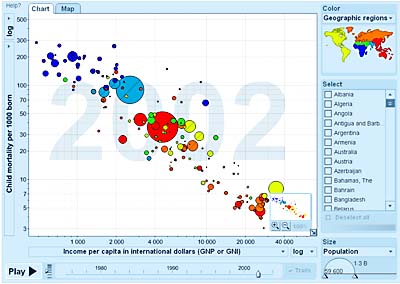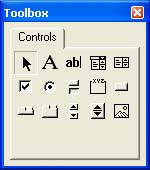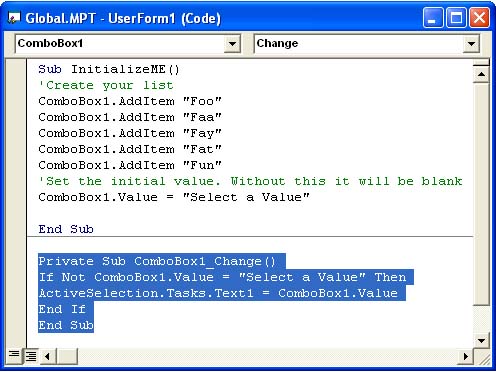Quote of the day
"Having a family member who is in politics, I've learned that whenever you see what seems like a religious fundamentalism there usually is a quest for money and/or power behind it." Source: Dare Obasanjo
"Having a family member who is in politics, I've learned that whenever you see what seems like a religious fundamentalism there usually is a quest for money and/or power behind it." Source: Dare Obasanjo
On the Critical Chain Project Management group I was suspected of being unprincipled because I made some disparaging remarks about rules (My view is that operating based on rules is less effective than operating on principles. Project Management is not one-size fits all.).
It prompted me to clear up some of the definitional issues. So first a few definitions I'm sympathetic with. First Rule:
Next Principle:
I've left out a number of definitions which state that a principle is a rule because, well, Humpty Dumpty said it best:
"When I use a word," Humpty Dumpty said, in rather a scornful tone, "it means just what I choose it to mean -- neither more nor less."
The definition is rather slippery. Here are some more thoughts on it:
"A principle internally motivates you to do the things that seem good and right. People develop principles by living with people with principles and seeing the real benefits of such a life. A rule externally compels you, through force, threat or punishment, to do the things someone else has deemed good or right. People follow or break rules. - source
"Principles are riverbeds, rules are pipelines." -source
"* rules: set limits, are a basis for exclusion, enable to us to argue right and wrong
* principles: are a basis for us to grow and expand, are a basis for inclusion, enable us to learn from differences." - source
My real point in this is that a set of project management rules is initially derived from a set of principles. It would be unusual for them to just be made up on a whim. They are perfectly valid and sound in the environment they grew up in, but sometimes they take on a life of their own and the fundamental principle behind them may fade from memory. Principles (in principle) are unchanging, but the environments that they exist in can be very diverse and a rule developed in one environment to achieve the desired actions may bring different actions in a different environment.
In practice, we often mix rules and principles in a single system. For example in Theory of Constraints the underlying principle is to focus on the constraint (identifying, exploiting, subordinating other processes to it, elevating it). A perfectly reasonable and useful principle. As this principle was put into action a number of rules of thumb came about. Some revolve around the mechanics - sizing of a project buffer for example, some are concerned about implementation - the rule that TOC must be adopted across the whole organization as another example, but my contention is that the "rules" should be reviewed and possibly adjusted for each different environment they are applied in. And when a rule does NOT comply with the principles, it should be eliminated or revised.
Rejecting or challenging or examining a rule in this situation does not indicate a lack of principle, rather it is a sign of attention to principle. Those who speak loudest about the tyranny of rules are often the most principled of all.
One quick way to determine if you have a principle or a rule is to ask "why?". If your explanation takes more than a sentence or two, then you have a rule.

This is the time of year the bark on this tree is the reddest and with no leaves it shows very brightly against the sky. Of course it also has a quieter side.

Just ran into this visualization tool which shows animated statistics for a number of key categories (child mortality, CO2 emissions, fertility rate, economic growth, urban population and a bunch of others) broken down by country over time.

Fun to play with and it does show some encouraging trends. Child mortality has been decreasing steadily in most parts of the world. Africa shows a few exceptions.
Worth taking a look at here
First thing this week the Microsoft Office Project 2007 was released, and already Dale Howard and Gary Chefetz at ProjectServer Experts have a book out. I'll post a review as soon as I get my hands on a copy, but if it is as good as their other books it is going to be worth reading. Amazon has it available to order, but it does not appear to be shipping yet. Congratulations Dale and Gary!
I got a question from someone who wanted to create a userform which would set some values in project. It was to be populated by some preset values. So here are the basics:
The first thing to do is to create a form. Going to the Visual Basic editor, you would choose "Insert / UserForm". This creates a blank userform and should display the toolbox.

Drag a combo box from the toolbox onto the form. It will be called "ComboBox1" if it is the first one. You can rename it using properties (and you should) but for this example we are not.
Now to write some code for the form. Hit F7 or go to the view menu and select "Code". This should bring up a window which you can type code in. The first thing is some code which will initialize the values for the combo box. I've called this simply "InitializeME" but name it what you like. The code in this sub has one line for each value you want to add. Here the values are hardcoded, but you could substitute it with code which reads values from a file stored somewhere or an array of values you have gathered from the project file itself. You are limited only by your imagination. Here is the code:
Sub InitializeME()
'Create your list
ComboBox1.AddItem "Foo"
ComboBox1.AddItem "Faa"
ComboBox1.AddItem "Fay"
ComboBox1.AddItem "Fat"
ComboBox1.AddItem "Fun"
'Set the initial value. Without this it will be blank
ComboBox1.Value = "Select a Value"
End Sub
Next you need some code to start the form. To keep this example pathetically simple we will only do two things here, initialize the combo box values and then show the form. You could do it the other way around, but better to have the form ready to go when the user first sees the form.
To do this insert a module (again from the insert menu). Then call the code to initialize the combo box, then show the form. The code is very simple:
sub ShowTheUserFormAlreadyPlease()
UserForm1.InitializeME
UserForm1.Show
end sub
You can run the code now. Go to tools macros and select the ShowTheUserFormAlreadyPlease macro. The form should display and have a working combo box. Of course it does NOTHING right now. So the next thing is to look at the methods of the combo box and see what it can do. If you look at the top of the code window you see on the left a box which says "ComboBox1". This selects an object to work on. On the right is a box which says "Change". This is a list of procedures associated with that object.

With the combo box selected on the left and the "change" procedure selected on the right the shell of a procedure will open and we will type code into it. This code sets the text1 field of selected tasks to the value that is selected in the combo box. When you change the combo box value it will run. Selecting a value in the combo box counts as a change. Here is the code:
Private Sub ComboBox1_Change()
If Not ComboBox1.Value = "Select a Value" Then
ActiveSelection.Tasks.Text1 = ComboBox1.Value
End If
End Sub
The only trick in there is the if then statement so that the text1 value does not change when you are setting the value of the combo box when it first displays. The code that you can put in the procedure again is only limited by what you can imagine. It could be extensive and create and initialize a new project with default values etc. As much as you are capable of.
Warning: I have not shown any error handling here. If you had no tasks selected you would have gotten an error or if there was no project open or ... so be careful and write procedures to handle that. And always test against whatever scenarios you can imagine.
Bill Raymond of PCubed has gotten back in the saddle with a new site after letting his old blog go dormant (search this site for "Everyone Loves Raymond" for a link to it) and it is good to see him back. Bill starts out with a video covering some of the features of Project 2007. I have a few articles about the new Project 2007 features here, but never dreamed of video.
Great to see you writing again Bill!
Found today's title from a comment over on Matt's site.
The attribution is to one "LanguageHat" who is far too literary for me to keep up with.
Some other thoughts on the subject:
"Things ain't what they used to be and probably never was." - Will Rogers
“I don't like nostalgia unless it's mine.” - Lou Reed
"He who praises the past blames the present." - Unknown.
The older you get the more obvious nostalgia becomes, especially the nostalgia of those of a later generation, which your own memory (if you have any left) exposes as being an exaggeration at best. But then what is the harm?
Longfellow called describe nostalgia as "A feeling of sadness and longing that is not akin to pain, and resembles sorrow only as the mist resembles the rain."
Nice, sweet even. Just don't drive under the influence of it.
Yes, so the year is still young, but if you don't take some time and read Hal Macomber's article on the pain of adopting new ideas you are missing something. It may not apply directly to that you are doing, but the beginning of the year is a good time to take stock of what you have been doing and whether it really needs some change. Start planting the seeds now for change to occur over the year.
Hmmm... podcasting? I thought you don't listen to podcasts? Well, today I did. I started with one from Cornelius Fichtner (www.thepmpodcast.com) and also one from Dina Henry Scott (controllingchaos.com). I'm not sure why, but they make me want to put on one of my own. Perhaps I'll give it a try when I find something to say...
Until then, you can check out those two and see if they float your boat. My one comment to both Cornelius and Dina is that they are a bit long. Time is always of the essence.
I'm listening to a podcast (from www.thepmpodcast.com) about Critical Chain Project management and hear from Allen Elder the familiar contention that when implementing Critical Chain in an organization "Pilots don't work". The reason given is that people are judged on a different system. I've heard this from almost every critical chain consultant that I know of, but I don't believe it. The contention is that people being "graded" on a different scale can't exist in the same organization.
Of course this is false. People with different job titles and on different projects co-exist within almost any large organization. One of the big problems is trying to compare the productivity or efficiency of these different groups, so it seems to me that this contention is just another tool in a consultant's toolbox to get a bigger contract.
I wonder how many organizations HAVEN"T gone for TOC precisely because of this insistence on "all or nothing". I'm on board with many of the concepts of TOC, but this one always seemed to be a bit sketchy.
Came across this table of visualization methods and have seen quite a few I've never seen before. It is definitely worth looking at. My only concern about it is that the periodic table of the elements provides hints about how elements behave and even interact. The author of this table is apparently just using the shape of the periodic table rather than the function.
Raven Young who runs Raven's Brain has tagged me in the great (or evil?) five things you don't know about me thread. So here goes:
1) The clues for knowing EVERYTHING about me are already out there, just google for them.
2) I have great appreciation for the smooth way people like Kathy Sierra and Hugh MacLeod dodged the questions.
3) Umm...
4) Do I really have to do this?
5) I am not as clever at dodging the question as Kathy and Hugh... but you knew that didn't you?
So in order to inflict no more damage on the world than I have to I'll let YOU decide if you want to be tagged. Let me know and I'll tag you, otherwise have a great 2007!
I guess it is not much different from Alcatraz except that the 5000 inhabitants of Gunkan-Jima, an Island 19km from Nagasaki covered with ruins and rusty metal, were employed in coal mining rather than being imprisoned. With the planned opening of the island as a tourist attraction sometime in 2008, the similarities get stronger. In case you haven't heard of it, Gunkan-Jima was a company town built on an island which was used for submarine coal mining. In 1974 the mine shut down and the island was abandoned. Photos show that people just left and never went back. Because the island was very small the buildings were very closely packed and the resulting ruins with the abandoned belongings look very post-apocalyptic. Here is a link to a site which has an extensive photo gallery:
http://www.gunkanjima-odyssey.com/GS21.htm
Don't worry that you can't read Japanese, the pictures in the main gallery speak for themselves.
And here, thanks to the miracle (?) of machine-translation is the announcement that it will be turned into a tourist attraction.
What modern ruins are in your part of the world? How are they being used to entertain or educate people?
OK it is up on the PMI reading list site now, so no need to purchase it anymore, and purchasing it would be a mistake as it is of little use once you pass the exam. It is also surprisingly thin.
So what do you get from it? A couple interesting things. The first is that it gives the reasoning behind switching from the "old" PMP test to the "new" one. The new exam is a direct response to PMI's attempt to align with some commonly accepted practices for testing and certification. They cite ISO 17024 and the National Commission for Certifying Agencies and begin with a role delineation study.
PMI's claim that their certification is "best-in-class" because of their global role delineation study, something which they claim is "rare, if at all seen in the association professional credentialing world". What that means to a potential PMP is really not very much. What other credential is out there? What about the PMP's who passed the earlier exam? If PMI really believes this, they should retest those people, but back to the subject. Sorry.
The spec also outlines general areas of study. Beyond the PMBOK, they recommend reading up on risk, scheduling, EVM, estimating and as a catch-all "other project management topics".
The Examination Specification refers to "content-valid" examinations. What this appears to mean is that the content of the exam should mirror the work done within the profession. This is why there are no questions on fishing or pie-making in the PMP exam (well, THIS PMP exam, the Pie-Making-Professional exam has questions on pie-making, and content too. Yum!).
Where was I? Oh yeah, content validation... A few years ago they did the role delineation study, and then convened 4 panels in different global areas to scrub the study and analyze the role of the Project Manager. Then a super-panel took that and boiled it down. What they arrived at was that Project Managers do 5 basic things. They are:
and they behave the whole time according to a standard of "Professional and Social Responsibility".
Next time we will start to break these down into what each of these basic phases are and start to see if we can map the PMBOK to the spec.
Bonus section for the OTHER PMP. The Pie Maker Professional Certification Specification: